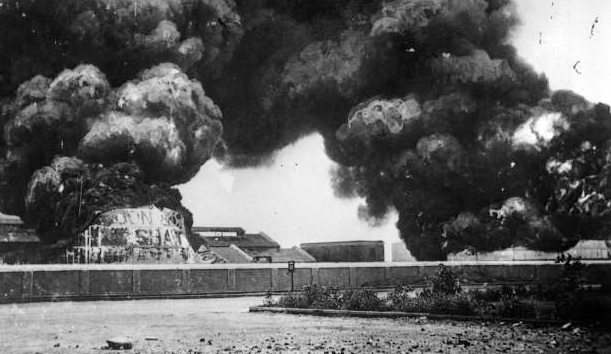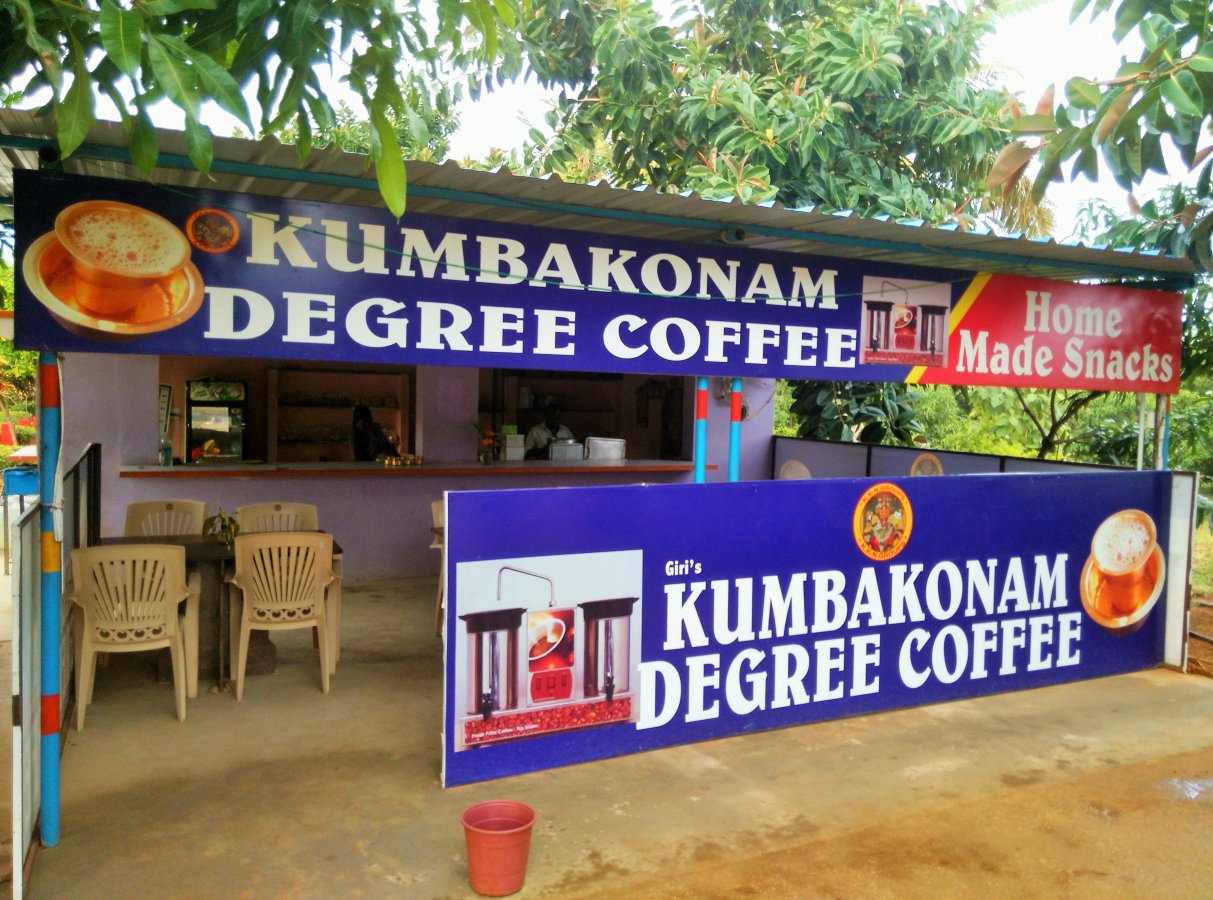Emden:
The first word for which I learnt etymology is Emden. I did not know the word etymology meant then. My father used this expression, ‘He is an Emden.’ We could understand what he meant by that remark in a particular conversation. It could be, he was praising some colleague’s capability or someone who pulled off a new contract or a young Engineer who managed a difficult situation. He would also use that expression while talking to his favourite cousin, Rajamani periappa (uncle) and remark, “Do you remember how Mani (someone in the family) managed to get everything done at the last-minute during the marriage? He is an Emden in the family.”
Getting an acknowledgement from our dad is not that easy because he set very high standards and you need to come close to it to get a word of praise. People who have read Jeffery Archer’s short story ‘A la Carte’ would remember the line, ‘Chef Jacques said, “Bon!” and that’s the highest accolade one can expect from the Chef.’ Well, ‘Emden’ from my father was something equivalent to that.
My father used to come late from office; after a quick shower and dinner, he would sit in the portico in an ease-chair and talk about the good old days. Remember all these happened in the mid-seventies. So, one day I asked him when he told one of his stories and mentioned ‘Emden,’ I asked him what did he mean by that. His reply was Emden was a war ship made in Germany and stealthily entered Madras port during World War I and bombed the oil storage tanks near the port. It was the only place in India to get hit during WW I. It was an extraordinary ship and also a great act to come near a heavily guarded port and bomb the hell out of the city. So, if we call someone Emden if he pulls off something great.
I did not give much thought about Emden or the accolade till few years later when I read a book about warships in British Council library. The word practically disappeared from our vocabulary after eighties. I also forgot the word till about couple of days back when I started reading the last chapter of ‘Tales of Old and New Madras,’ a seminal work of Mr. S. Muthiah who is a great Historian of Madras, now Chennai city.
SMS Emden was the second and final Dresden class of light cruisers of the Germany Navy and name after the city where it was built. I am quoting from Mr. Muthiah’s book.
‘Commanded by Lt. Commander Karl von Muller, known as one of the “finest German Naval Officers”, she joined the German East Asia (China Station) squadron in the Germany colony of Tsingtao in China. When War broke out in August 1914, the squadron, avoiding Allied naval forces, headed for Germany. The Emden alone was ordered to scour the Indian Ocean for unescorted English merchantmen. In three months she sank 28 Allied merchant vessels, a Russian Navy cruiser and a French destroyer off Penang. She also captured a couple of ships to act as supply vessels. Naturally all this caused great panic in the Indian Ocean. The Allies, by the end of October, had 60 naval vessels hunting the Emden, but von Muller disguised his ship in such a way that the Royal Navy time and again mistook it for its own cruiser, HMS Yarmouth, and often saluted it as the vessels crossed!’
(Muthiah, S. Tales of Old and New Madras (p. 435). Westland. Kindle Edition).
On the night of fateful day, September the 22nd1914, Muller approached the Port of Madras city and fired on the fuel tanks of the city. Muthiah writes,
‘The Emden fired about 125 shells at the Port of Madras and its environs, hitting the premises of the Burmah Oil Company and causing damage to the tune of £30,000, which included the loss of 3,50,000 gallons of kerosene stored in two tanks.’

Residents of Chennai city can check if their neighborhood was hit by Emden here. Some of the areas the bombs fell are, The General Hospital or GH, Vepery, Nungambakkam, the sides of High Court, Casa Major Road, Royapuram , George Town, 1stand 2ndLine Beach. The Emden also damaged couple of ship berthed at the port.
Emden went off as quietly as it came unchallenged by anyone. It eventually met it’s Waterloo (Met one’s Waterloo is another phrase in English Lexicon) in Cocos Islands. HMS Sydney was equally powerful cruiser and almost sank the Emden killing 131 of 330 people on board. The captain Muller and some of his crew were captured and kept as prisoners of war.
The Emden legend did not stop there. Quoting Mr. Muthiah again,
‘The Sydney ignored the German shore party of 50 seamen, with small arms, led by Under Kapitan Hellmuth von Mucke who had landed on Direction Island from one big and two smaller boats. von Mucke and his men who had lain hidden, watching their ship being destroyed, seized a 125-ton three- masted schooner Ayesha – which was moored in the lagoon with no cover aboard – seized some supplies and sailed out as soon as the Sydney got underway. Despite none of them knowing how to handle a sailing vessel, they managed to reach Padang in Sumatra, in the neutral Dutch East Indies, where they found a German merchant vessel getting ready to sail. They made their way to German East Africa, arriving on the May 5, 1915, then trekked overland, eventually reaching Germany to be greeted as heroes. The feats of the Emden were so highly rated in Germany during the Great War that the Kaiser decreed that all its crew and their descendants could thenceforth `double-barrel’ their surnames by suffixing the Emden to it. Thus, its skipper, Captain Helmut von Muller became Muller-Emden. All these Emdens apparently still get together every year to toast the ship that contributed to their names.’
HMS Sydney did not become as popular as the SMS Emden, a rare case where the vanquished is remembered but not the conqueror.
Readers in Australia can check out the diorama of HMS Sydney and SMS Emden at the war memorial museum in Canberra.
Originally meant to denote a person of daring against all odds at all circumstances, the word Emden came to denote a person who could get things done or who can think on his feet and complete a difficult task. That’s some legend.
Degree Filter Coffee:
For millions of people from Tamil Nadu for over a century, mornings meant a hot cup of coffee and newspaper, mostly The Hindu. Though Tamil Nadu is not a big Coffee growing state like Karnataka this custom of Coffee and Newspaper is associated more with Tamil Nadu. Coffee was also defined in many places (mostly small eateries) ‘Degree Coffee.’
Tons of reels of paper and a billion-terra bit of data has already been written about south Indian filter coffee. I will stick with only the phrase ‘Degree Coffee.’
The ‘Degree Coffee’ also went out of vogue by late eighties. Suddenly one saw dozens of ‘Kumbakonam Degree Filter Coffee or KDFC dotting the highways in Tamil Nadu a few years back. I have written about an encounter in one of these joints, in my blog ‘I thought it was an Old Man – Notes from East Coast Drive.’ I decided to check what ‘Degree’ coffee actually is.

Making filter coffee is an art, more than just science. It is said coffee beans have more than 1000 aromas and you need to get at least some in your coffee to qualify for a good coffee. A good filter coffee has 50% of Peaberry and 50% of Plantation A seeds. My grandma used a hand grinder to grind coffee seeds to get freshly made coffee powder every day.
You then put the powder in a filter, use a small umbrella like concoction to press them. If you press too hard, the hot water will not percolate down and you if the correct pressure is not there, the water will come down in a jiffy, resulting a in light decoction.
Then you pour the boiling water slowly over the coffer powder in a clockwise direction. Once water is filled, you cap the filter and tap the top of the filter. This is again an important ritual. The tapping is done to clear any plugged holes in the filter. The tapping has to be gentle; a hard tap will result in light decoction.
Once the decoction is ready, you pour hot milk over it. The decoction and milk should be hot to get the right aroma and taste. You should not heat the coffee once it’s made. It’s like the English Breakfast Tea, my boss Mike used to make. It’s the tea, hot water and cold milk. I used to ask him why add cold milk to hot water? It will only reduce the temperature of the tea. He used to reply, “That’s how you make tea.”
The story is about Degree coffee and not about making coffee. Why the coffee is called Degree Coffee. There are two possibilities:
To get a good coffee, the quality of milk should be good. And the purity of milk is checked with Lactometer. In the olden days, someone must have got confused between Lactometer and Thermometer. Since the temperature is measured in degrees (Fahrenheit), the confusion resulted in purity in degrees and the name struck.
In middle class homes, the first decoction was kept exclusively for the head of the family. For others, especially the children, hot was poured once again, in the filter. The second decoction would be much lighter, but the children had to do with it. The first decoction was called No 1-degree coffee.
I think the first explanation is more valid. The ‘degree coffee’ is struck in Indian English dictionary for over a hundred years.
Xerox:
One word which came into English Lexicon in our generation is ‘Xerox.’ Photocopying machines came to India in the late seventies or early eighties and the first photocopiers to arrive in India were made by Xerox. In India, no one made photocopy. They just made a Xerox. I am not sure if anyone was aware that the photocopiers used a process called xerography to make copies and the word Xerox came from xerography.
Many photocopier companies set up shop in the following years, Sharp, Konica Minolta, Ricoh, Brother and chief among them Cannon. But the photocopy made from any of these machines is also called Xerox.
Even today across the country you can see signs, “Xerox 40 Paise, Colour Xerox, Student Xerox” etc. But no shopkeeper will put out a sign “Photocopying done here.” Customers won’t know what he is talking about and go ahead to look for a Xerox shop.
It’s always Xerox shops. No photocopying.
The word Xerox is used as a noun and also a verb. Someone would say, “I Xeroxed the entire book.” I am sure he or she could have done the photocopying from a Cannon Machine. No one says I have cannoned the book. It’s always Xerox. That’s some brand building.
I have written a story about Photocopying in one of my earlier blogs, Pass, Gate Pass and Naa Pass.
This weekend, when you are sitting with your coffee or Cup of tea and a newspaper (broadsheet or the electronic one), think who could be the ‘Emden’ in your family.
Photo Credits: Emden Photo – Wikipedia and the burning oil tanks By Agence Rol – Bibliothèque nationale de France, Public Domain, https://commons.wikimedia.org/w/index.php?curid=9522696



Leave a comment